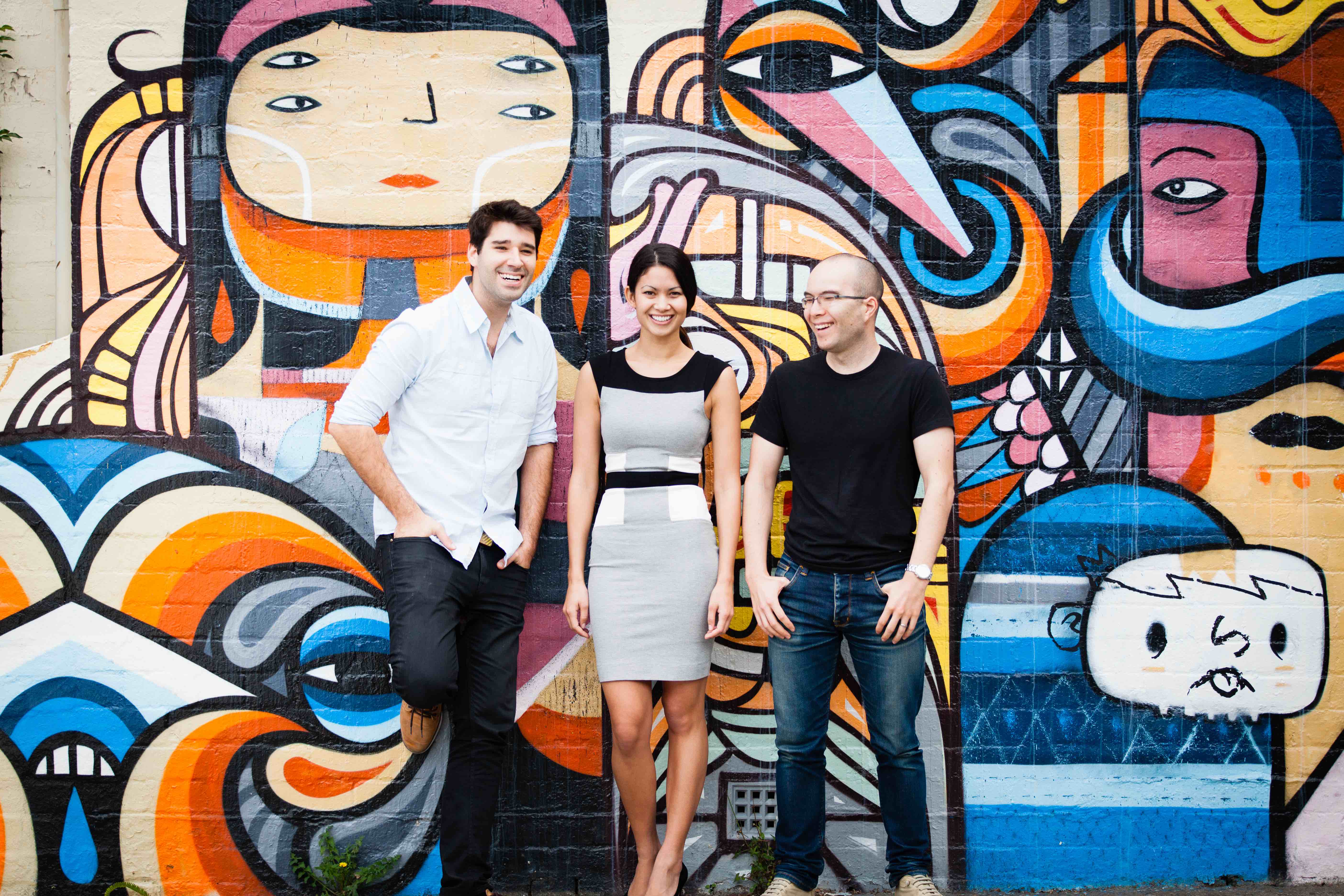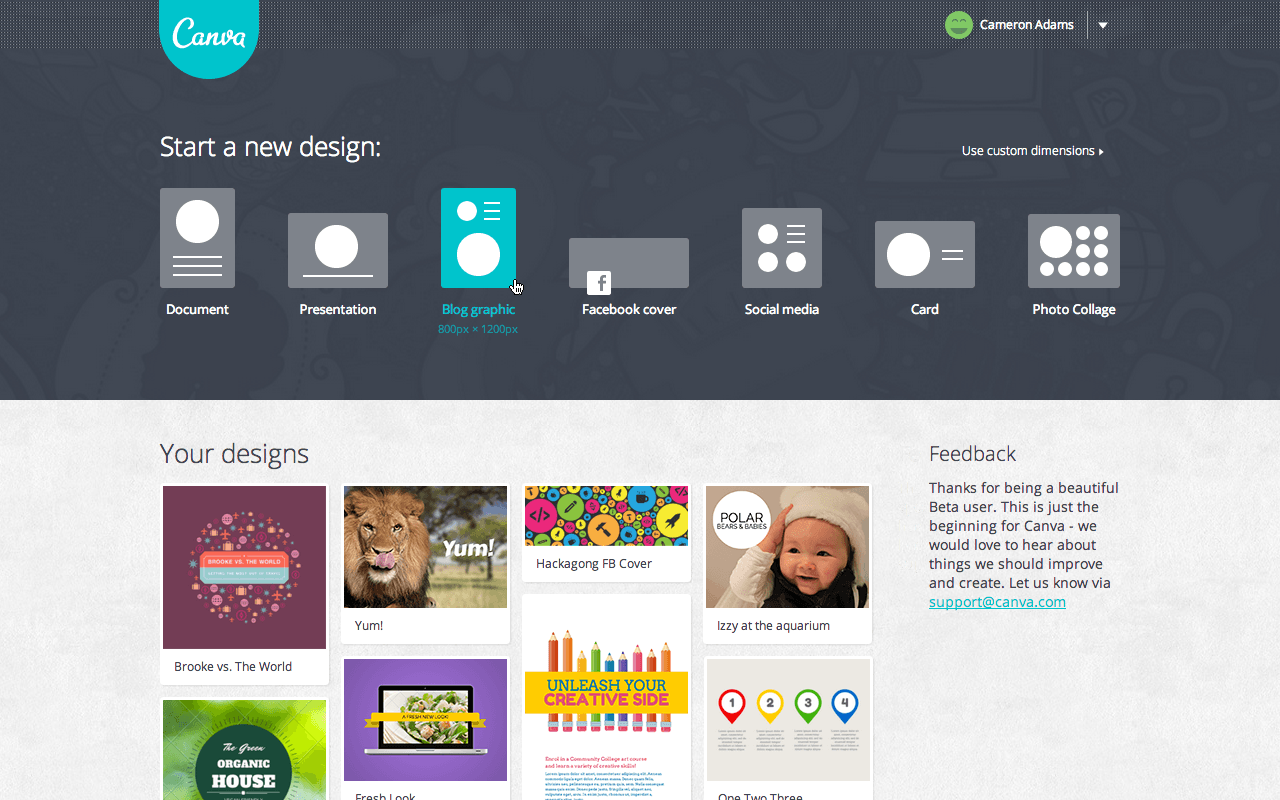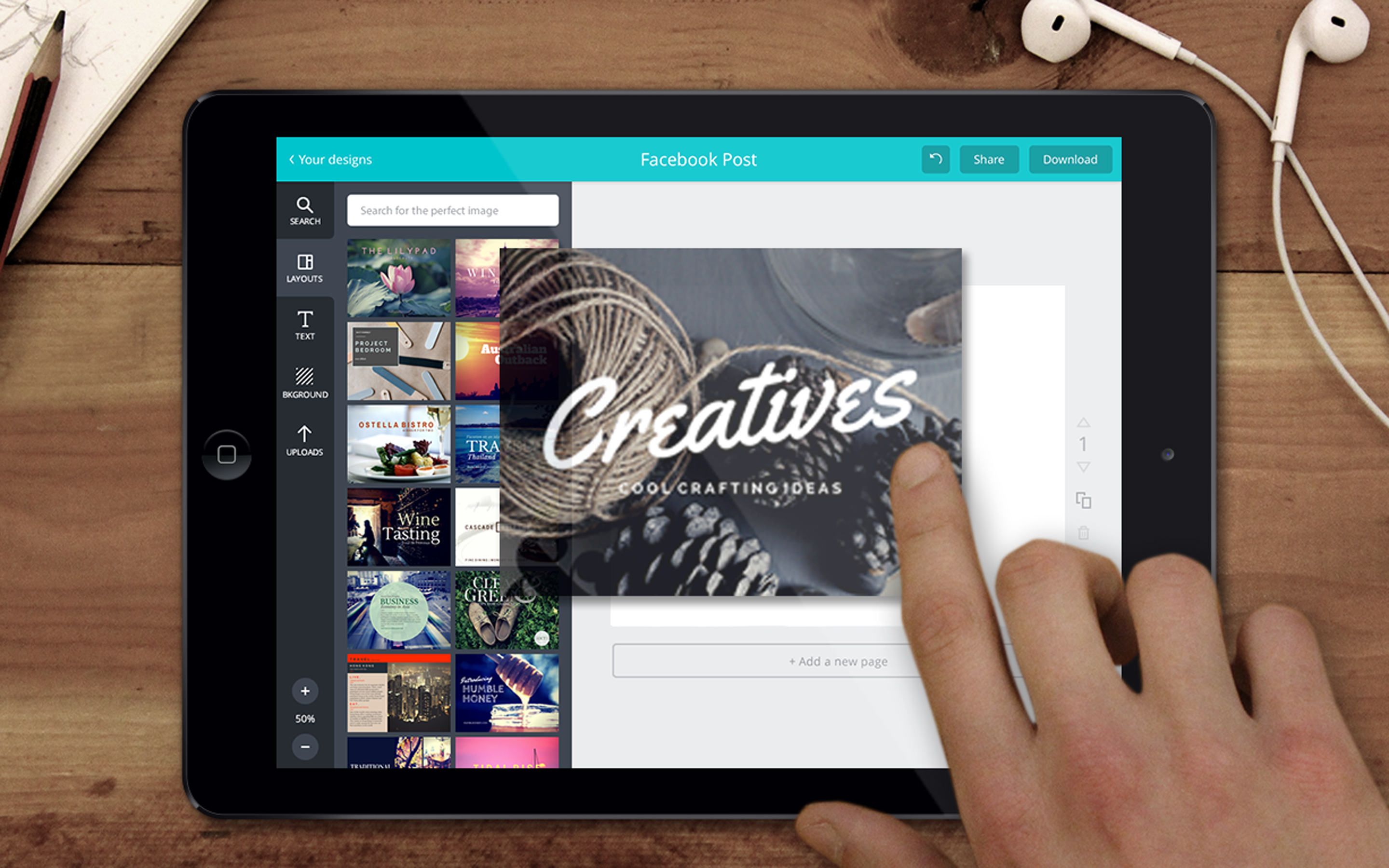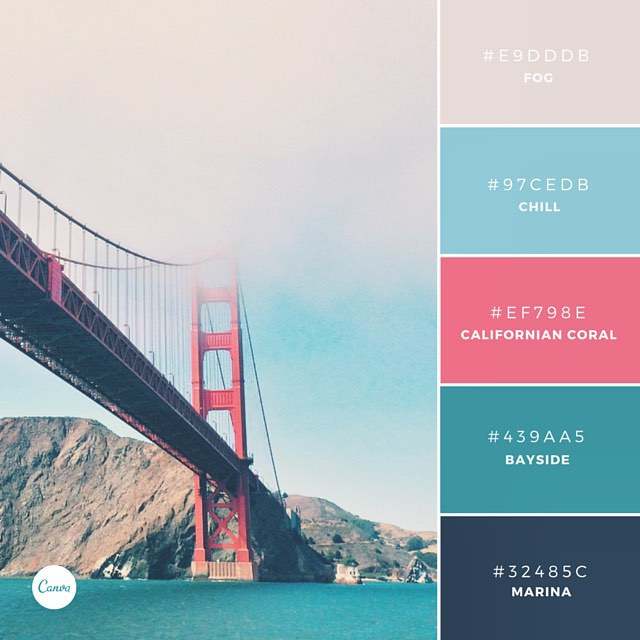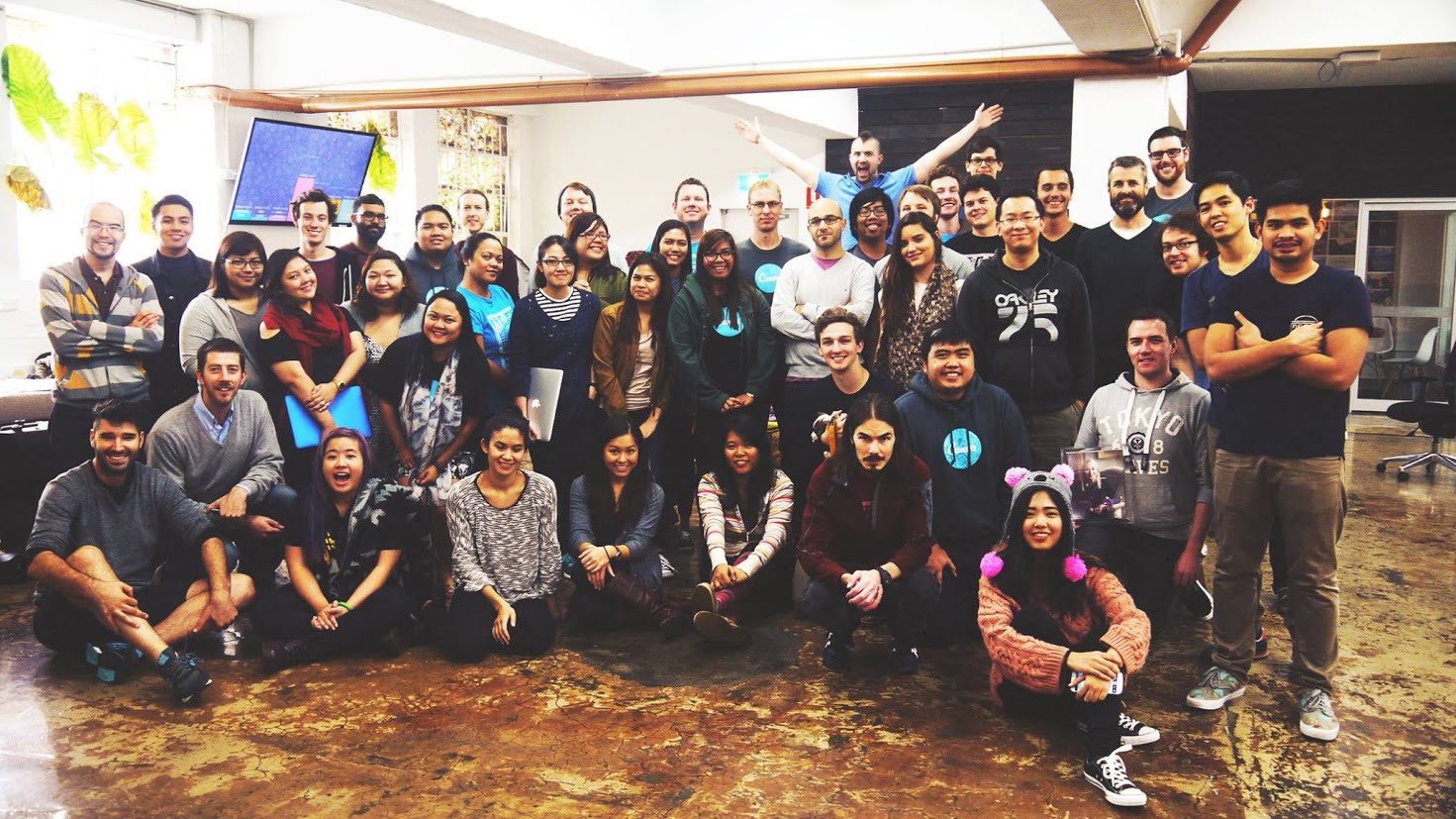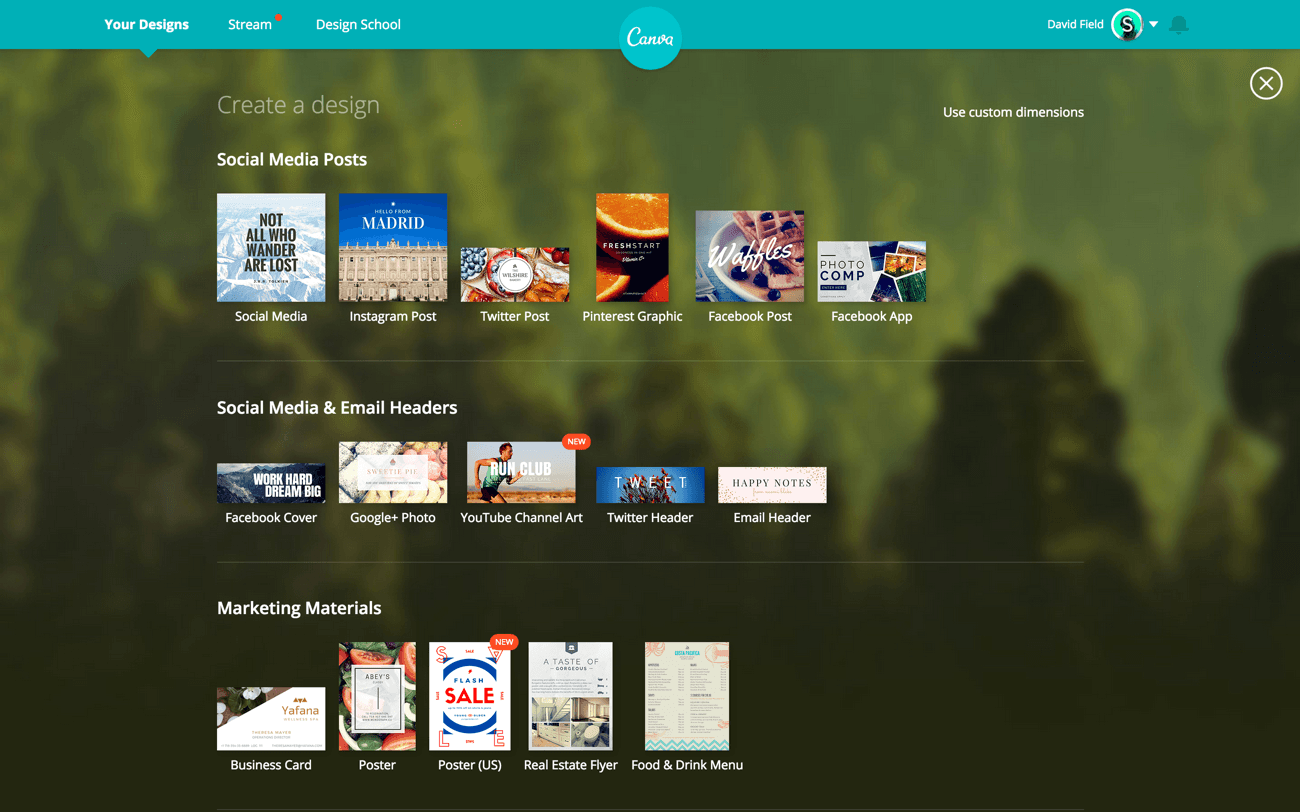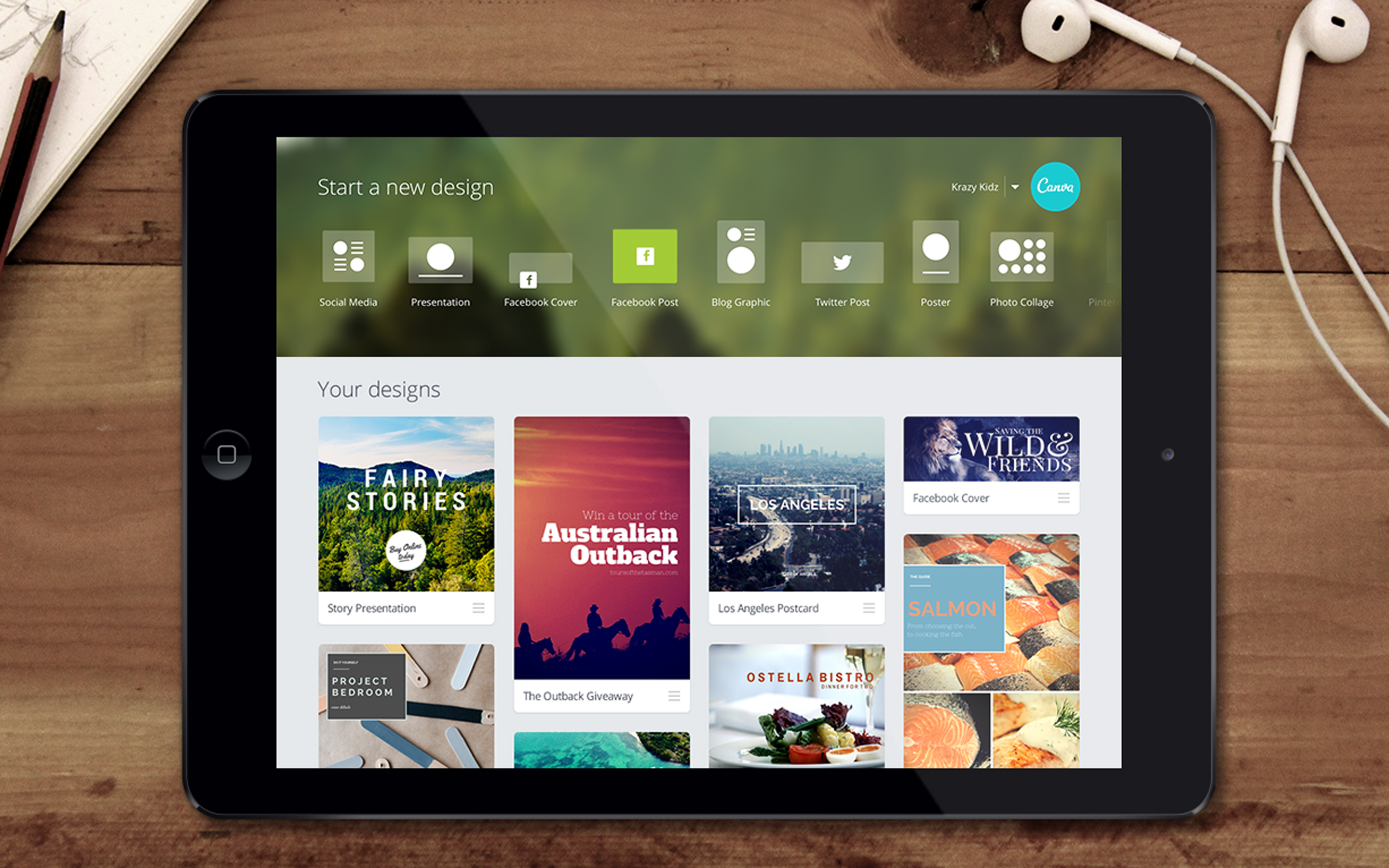Aug 24, 2015 8 Questions with: Cameron Adams from Canva
I first heard about Canva from one of Guy Kawasaki’s talks in April, as he is the startup’s Chief Evangelist. I don’t have a design background, so I immediately loved how simple the tool is and how relevant it can be for all creation needs. Canva is a cloud based web and iPad app that allows users to create amazingly simple and stunning designs for blogs, social media, presentations, and more, all without requiring Adobe Photoshop or Illustrator. With easy drag and drop functions, a turnkey interface, limitless fonts and photo database, photo editing, and collaboration tools, the tool is a dream for the average person. I personally find The Design School section of their site a phenomenal reference as well. The company launched in 2012 and was founded by Melanie Perkins (CEO), Cameron Adams (CPO), and Cliff Obrecht (COO). It recently launched Canva for Work and will soon be developing a feature for design professionals and agencies. With 4 million users and counting, Canva is well on its way. Co-founder/Chief Product Officer Cameron Adams graciously shares reflections about their exciting experience as a rapidly growing Aussie startup, including raising $12.6M in seed funding to date and managing through unchartered territory.
Tell us about that last three years, concepting Canva, incepting the company, developing the product, and launching the brand?
It’s incredibly exhilarating taking something that you think *could* work and turning it into something that actually *does* work — something that has millions of users and millions of designs created every week. That kind of growth has consequences that you just don’t think about when it’s just three of you huddled around a shared desk.
The thing that’s had the greatest effect on me over that time is watching our team grow. I can still remember me and Mel sitting in our cavernous first office and wondering how we were going to fill that space. Three years later, we’ve filled that space, moved to an even bigger one and have filled that too. When we started out, it felt like a team of five would be enough to build something meaningful, and I was certainly wrong there. Now we’re over 70 incredibly busy people, and we don’t have enough hands to build everything that we can dream up. I barely get to write any code any more, and when I do I get chastised by the engineers.
How do you see Canva disrupting the design space?
I don’t see Canva disrupting the design space so much as creating an entirely new space to play in. Since releasing Canva we’ve seen so many people use our tool who never had the means to access design, or even the chance to think about it as part of their day-to-day lives. Seeing what they can create with an easy-to-use tool has been amazing and really highlights the importance of visual communication in today’s society.
It’s easy to place Canva in opposition to existing design tools, but really I think they complement each other perfectly. We’re bringing design to the 99% of the world who didn’t know they needed it, and with that increased awareness comes an increased appreciation for the art of design.
How has the process of fundraising and going through a Series A been?
Almost every single chapter of our journey has had a learning curve. For example, not knowing anything about how to build a company or product, how to market, how to expand internationally, how to hire people, or how to raise investment. Some of these roadblocks took a few Google searches to figure out, while other challenges took years to solve.
For example, it took three years from pitching Canva for the first time, before Melanie and Cliff were first able to raise investment. During that time Melanie spent six months in San Francisco and made one hundred revisions to the pitch deck. Facing that pressure, however, led to a refining of Canva’s overall strategy, and we’re now fortunate to have a fantastic group of investors and advisors who all support Canva in different ways. Canva’s now raised $12.6 million in funding.
Describe some of the projects/initiatives/milestones that you are most proud of.
It would be hard to rank any particular milestone as highly as our first release. That moment when you unveil something entirely new to the world is both exciting, nerve-wracking and embarrassing (following Reid Hoffman’s adage that if you are not embarrassed by the first version of your product, you’ve launched too late.) But really, launching is just a very small step in achieving anything — it’s what happens afterwards that determines its success.
One of the things I’m actually most proud of is the team that we’ve built up around us. They are the ones that have enabled us to grow as quickly as we have and it’s a testament to their caliber and hard work that we’ve gotten where we are. Finding people who are able to think independently but still contribute as a team has been one of the secrets to our success.
Where you would like to take Canva going forward?
One of the biggest opportunities we’d like to tackle going forward is internationalisation. There’s massive opportunities for Canva in non-English speaking markets and we’re just beginning to scratch the surface there.
The other thing we’re excited about is Canva in the workplace. We just launched Canva for Work, which is a set of tools designed specifically to help people who use Canva in businesses and teams, but what we have released is just the beginning and we’ll continue to add new features and ideas that change the way people interact with design at work.
What are some insights and lessons you would share on managing growth?
At the beginning of building a business you have to do everything — design, support, engineering, marketing, accounting, cleaning — because there’s no one else who *can* do it.
Hopefully, that hard work gets you a bit of success — you get a few users, you get some more money. But inevitably with that comes more demand: more support, more design, more engineering, more marketing, more accounting (and cleaning). That’s when you start to think about hiring people to do the things you currently do.
You’re never going to be able to hire someone to do *everything* for you (because you don’t have all the money in the world), so you need to think about what you’re executing most poorly on (because of time or expertise) and hire someone who’s extraordinarily better at it than you. You only have a limited amount of things you can concentrate on, so it’s vital that you figure out what areas you personally deliver the most value in and delegate everything else.
In the early stages of a company, hiring well-rounded people who can pitch in on multiple areas is a better investment because you can delegate more with greater effect.
How is Canva’s experience being headquartered in Australia? How do you find the entrepreneurial and venture community there?
Being in Australia has been great for us. Like all things, it has its pros and cons, but we’re finding it a great experience to grow a company here.
There’s probably less access to talent than you’d get in Silicon Valley, but on the flipside people you *do* hire are more loyal so you get less churn. There’s plenty of other benefits that have helped us convince people to move to Sydney to work at Canva: the weather, the people, and the relaxed attitude.
Venture Capital is definitely less mature here than overseas — we have investors from both the U.S. and Australia — but it’s certainly growing, and hopefully more success stories will create a virtuous cycle for Australian startup investment.
As CPO, where do you personally find inspiration?
I have a strong background in design and experience, so I mostly take inspiration from design of all sorts — graphic design, product design and industrial design. However, I also have a background in computer science, so most of what I enjoy has a technical bent to it as well. Seeing something that’s well built and serves a greater purpose (besides being a trendy app) always bring a smile to my face — so that’s what I’m constantly looking for.



